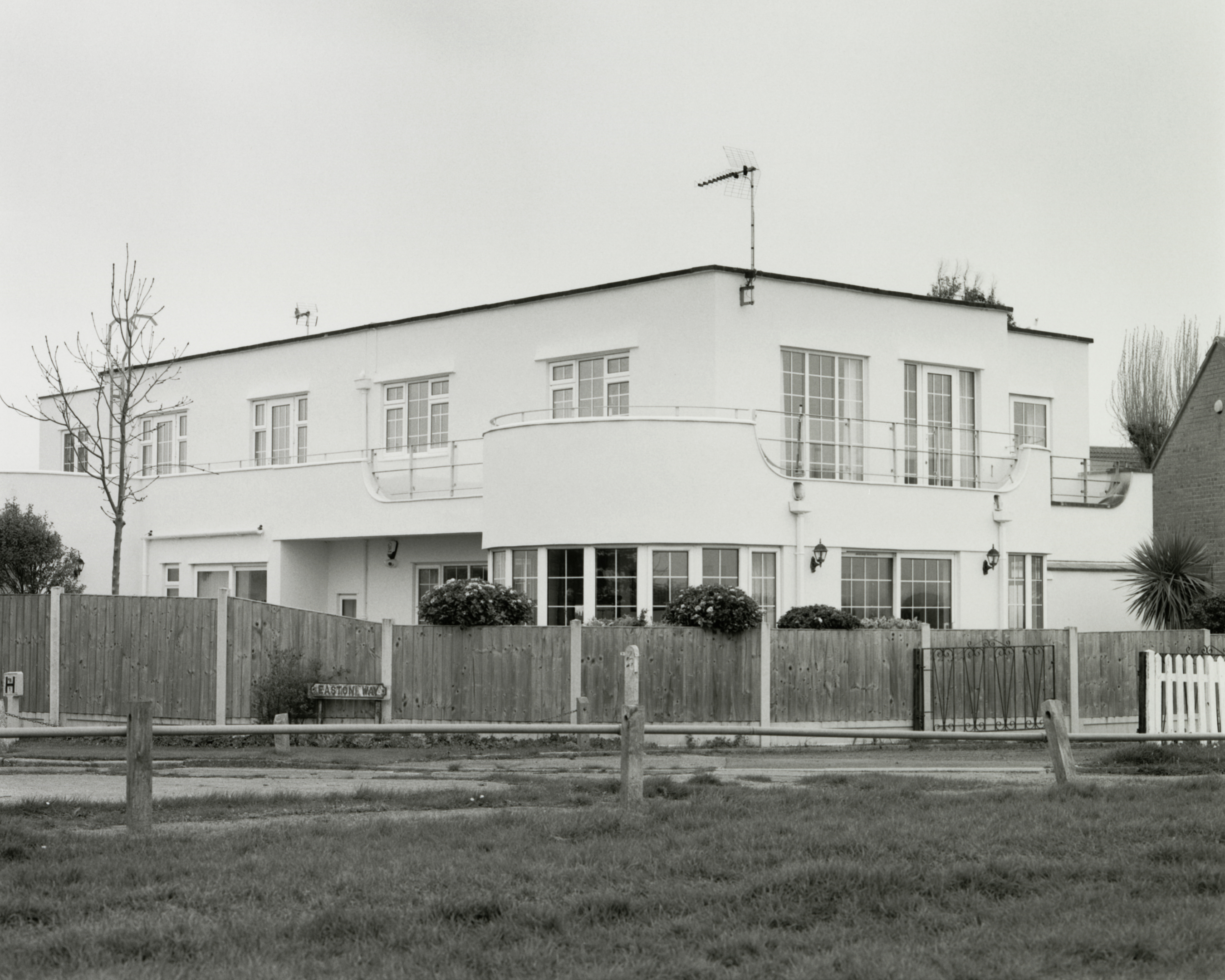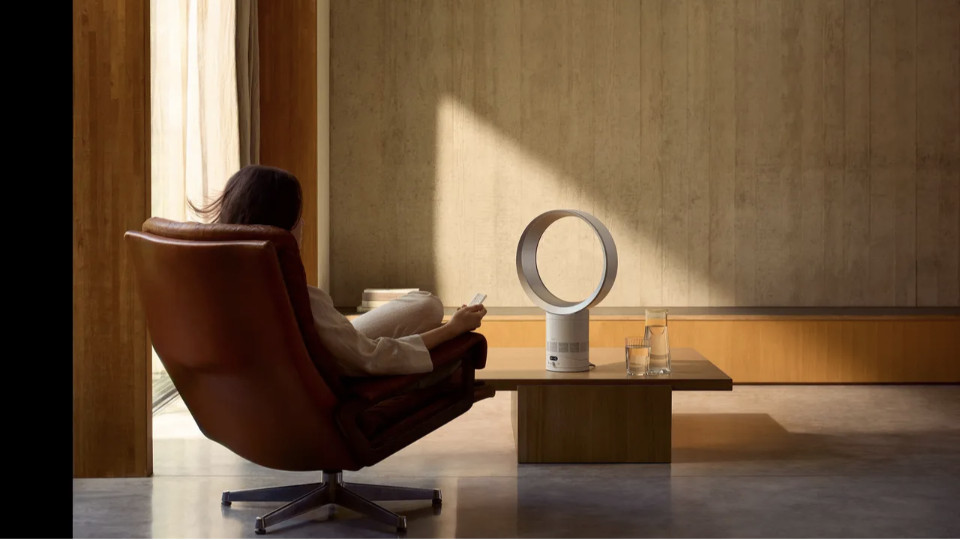New book takes you inside Frinton Park Estate: the Essex modernist housing scheme
‘Frinton Park Estate’, a new book by photographer James Weston, delves into the history of a modernist housing scheme in Essex, England

Frinton Park Estate, a new publication featuring captivating visuals by photographer James Weston, has just launched, exploring the modernist architecture and art deco roots of the housing scheme at Frinton On The Sea in Essex, England. The book looks at the project's history, from its beginnings in 1936 when South Coast Investment Company bought 200 acres of land on site led by consultant architect Oliver Hill, to the completion of the 25 homes (out of the 50 in total, planned by architects such as FRS Yorke and Connell, Ward and Lucas, as well Maxwell Fry and Wells Coates). The ambitious scheme exemplified the era's 'Streamline Moderne' aesthetic of naval-inspired shapes and crisp, white volumes. The result? A striking collection of 20th-century homes, seen here through Weston's expert lens.
We talk Frinton Park Estate with photographer James Weston

Wallpaper*: How did you come about the area and project? Was your shoot series the first time you visited?
James Weston: Frinton is a small seaside town not far from where I grew up. I would often go there with my parents when I was younger; I still go there now when I can.

W*: What attracted you to the project?
JW: I was always intrigued by the original 1930s houses in the area, and found some of them very beautiful. Maybe more importantly, I'm fascinated with this idea of how we perceive the future and how it actually unfolds. Not in a pessimistic way, just more seated in realism as opposed to idealism and fantasy.
In relation to this project, this manifests itself as an idealistic vision of future living arrangements, which ultimately did not materialise as was originally envisioned.

W*: Why black and white?
Wallpaper* Newsletter
Receive our daily digest of inspiration, escapism and design stories from around the world direct to your inbox.
JW: Good question. I’ve never seen these houses in black and white. I think it adds to an ambiguous aspect of time and place, I also love printing black-and-white in the darkroom.
After starting the project, I rediscovered early books by Ed Ruscha, such as Twentysix Gasoline Stations, Every Building On The Sunset Strip, Thirtyfour Parking Lots and Some Los Angeles Apartments. These books confirmed the vision I already had in my head for Frinton Park Estate. There is a DIY aspect to them, as well as a deadpan aesthetic, all of which are in black and white. I also wanted the book to feel like something you might stumble across in the school library, like an academic textbook you might have found from a bygone era.

W*: Did the result match your expectations?
JW: As the photos are not of people, it’s far easier to control and anticipate the results, so yes the result is quite close to what I expected.

W*: What surprised you about this project?
JW: Just how important trees are, and what a difference they make to both a house, and a housing estate.

Ellie Stathaki is the Architecture & Environment Director at Wallpaper*. She trained as an architect at the Aristotle University of Thessaloniki in Greece and studied architectural history at the Bartlett in London. Now an established journalist, she has been a member of the Wallpaper* team since 2006, visiting buildings across the globe and interviewing leading architects such as Tadao Ando and Rem Koolhaas. Ellie has also taken part in judging panels, moderated events, curated shows and contributed in books, such as The Contemporary House (Thames & Hudson, 2018), Glenn Sestig Architecture Diary (2020) and House London (2022).
-
 Dyson’s new Cool CF1 fan brings quiet, compact cooling into the home
Dyson’s new Cool CF1 fan brings quiet, compact cooling into the homeAn evolution of Dyson’s quest to reinvent the humble desk fan, the Cool CF1 is enhanced and updated for a new, smarter generation
-
 Rowse’s make-up products are so nourishing that ‘you could actually sleep in them’
Rowse’s make-up products are so nourishing that ‘you could actually sleep in them’As Rowse expands from skincare to make-up, Wallpaper* speaks exclusively with co-founders Nuria Val and Gabriela Salord about the biotechnology that underpins its innovative debut collection
-
 San Francisco’s controversial monument, the Vaillancourt Fountain, could be facing demolition
San Francisco’s controversial monument, the Vaillancourt Fountain, could be facing demolitionThe brutalist fountain is conspicuously absent from renders showing a redeveloped Embarcadero Plaza and people are unhappy about it, including the structure’s 95-year-old designer
-
 This contemporary cabin cantilevers over a Scottish loch
This contemporary cabin cantilevers over a Scottish lochRock Cove, Cameron Webster Architects’ contemporary cabin in Argyll, Scotland, makes the most of its wild setting
-
 What to see at the London Festival of Architecture 2025
What to see at the London Festival of Architecture 2025June is all about the London Festival of Architecture 2025; we browsed the over 450-event rich programme for its highlights, so you won't have to
-
 Modernist Travel Guide: a handy companion to explore modernism across the globe
Modernist Travel Guide: a handy companion to explore modernism across the globe‘Modernist Travel Guide’, a handy new pocket-sized book for travel lovers and modernist architecture fans, comes courtesy of Wallpaper* contributor Adam Štěch and his passion for modernism
-
 V&A East Storehouse is a new London museum, but not as you know it
V&A East Storehouse is a new London museum, but not as you know itDesigned by DS+R, the V&A East Storehouse immerses visitors in history as objects of all scales mesmerise, seemingly ‘floating’ in all directions
-
 Timeless yet daring, this Marylebone penthouse 'floats' on top of a grand London building
Timeless yet daring, this Marylebone penthouse 'floats' on top of a grand London buildingA Marylebone penthouse near Regent’s Park by design studio Wendover is transformed into a light-filled family home
-
 Revamped National Gallery Sainsbury Wing unveiled: Annabelle Selldorf gives us a tour
Revamped National Gallery Sainsbury Wing unveiled: Annabelle Selldorf gives us a tourThe National Gallery Sainsbury Wing redesign by Selldorf Architects is ready to open its doors to the public in London; we took the tour
-
 Wild sauna, anyone? The ultimate guide to exploring deep heat in the UK outdoors
Wild sauna, anyone? The ultimate guide to exploring deep heat in the UK outdoors‘Wild Sauna’, a new book exploring the finest outdoor establishments for the ultimate deep-heat experience in the UK, has hit the shelves; we find out more about the growing trend
-
 Ukrainian Modernism: a timely but bittersweet survey of the country’s best modern buildings
Ukrainian Modernism: a timely but bittersweet survey of the country’s best modern buildingsNew book ‘Ukrainian Modernism’ captures the country's vanishing modernist architecture, besieged by bombs, big business and the desire for a break with the past